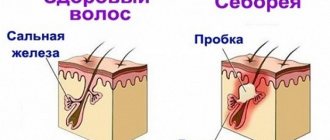Sometimes patients complain of wandering pains throughout the body of varying intensity; they can suddenly appear and disappear regardless of the time of day. There is no such disease in ICD 10; symptoms are usually provoked by various pathologies or disorders that occur in a latent or subacute stage. Often clients come to a traumatologist and ask why their arms and legs are numb, and in such cases a consultation with a neurologist is needed. But migrating muscle pain can be cured by a therapist. Diagnostics will help determine the provoking factor.
Causes of wandering pain
When all the muscles, bones and joints of the whole body hurt, the search for the causes begins with a visit to the doctor. But in order to know which doctor to go to, you need to take into account the presence of chronic diseases, previous infections or a predisposition to the development of various pathologies.
All provoking factors may be common and characteristic of a specific localization of the symptom. Most often, the causes of wandering pain throughout the body are systemic disorders and pathologies:
- physical overload and muscle strain;
- previous acute respiratory viral infections or infectious poisonings;
- postural disorders and spinal diseases;
- muscle inflammation due to hypothermia;
- constant stress and neuroses;
- various chronic diseases (diabetes mellitus, rheumatism, arthritis, etc.).
These are the most common causes of the symptom. It is possible to determine why the muscles of the whole body hurt only by conducting instrumental diagnostics and examination. Before going to the doctor, you need to assume a provoking factor that may cause pain. To do this, you need to take into account its localization and manifestations.
The doctor explained why goosebumps appear and run all over the body
Photo: depositphotos/HayDmitriy
Immunologist Anna Shulyaeva explained why goosebumps appear and run on the body, reports the Arguments and Facts website.
She noted that in most cases this phenomenon is completely harmless. Most often, goosebumps appear as a result of a reflex to danger. This effect is a human atavism, and animals protect themselves in this way.
“Most often, such a reaction is observed in response to some external stimuli, and goosebumps appear on their own, unexpectedly and not always on time,” Shulyaeva noted.
She added that the cause of goosebumps is most often an emotional outburst or hypothermia. In a normal reaction, the effect wears off without any consequences after a few seconds. At the same time, goosebumps may be evidence of some kind of pathology.
Shulyaeva noted that if they appear for no apparent reason, then this may be a reaction to neurological disruptions in the body. In this way, the body tries to tell about damage to the nerves or nerve endings.
“Also among the reasons may be vitamin deficiencies, the appearance of some neoplasms that compress the nerves. This situation can occur spontaneously and against the background of problems with blood vessels. In this case, it is recommended to visit a phlebologist for a detailed study of the situation, diagnosis and treatment,” Shulyaeva said.
She added that pain or numbness in the limbs that occurs after the appearance of goosebumps may also be a reason to see a doctor. In addition, the effect of running, as if goosebumps ran all over the skin, is considered a deviation from the norm. This may be a consequence of a lack of vitamins or insufficient oxygen supply to the tissues.
In addition, among the reasons it is worth noting a lack of collagen. In such cases, the skin begins to peel off and irritation begins to appear on it. In this case, you need to adjust your diet, making it more fortified, which a specialist can help with.
The chills and tremor of the limbs can also be masked by the chills effect. This may indicate problems with the thyroid gland, and therefore you need to consult an endocrinologist. The appearance of goosebumps on the left side may indicate problems with the heart and blood vessels, especially if they last more than 5 minutes and are accompanied by trembling.
If, in addition to the appearance of goosebumps, chronic fatigue, heaviness, swelling or numbness in the legs appear, then it is necessary to undergo a full medical examination. It is especially worth paying attention to the performance of blood vessels and the presence of plaques in them.
Earlier, dermatologist Svetlana Zhaboeva gave recommendations on skin care in case of sunburn. She noted that the first step is to wash your face to eliminate sweat and dirt. Then you need to apply a soothing cream to the skin.
Pain in different parts of the body
Typically, migrating pain throughout the body spreads in a certain area - the right or left limb along the forearm, hand, thigh, lower leg or foot. Synchronicity of lesions on the right and left is often noted; with such severity, a specific disease can be assumed and a preliminary diagnosis can be made. This will help prescribe a course of treatment that will give the most effective results.
You can determine what causes discomfort by location - usually the head, neck, back, stomach or limbs. Certain diseases have an attachment to topography, in which the nature of the pain is different.
In my head
If migrating pain throughout the body is accompanied by the appearance of a symptom in the head, neurological disorders should be assumed. They are caused by exogenous or internal causes:
- Pinched nerves – due to osteochondrosis or muscle spasms, spinal roots can be compressed, which provokes acute stabbing or burning pain;
- With injuries, infections or the initial stage of osteochondrosis, pressing pain in the frontal lobe may appear. In this condition, it is better to be examined immediately; sometimes the symptom is provoked by oncology;
- Often, headaches appear when wearing uncomfortable hats, caps, tight motorcycle helmets, glasses, etc. In such cases, after eliminating the provoking factor, the symptoms completely disappear.
Therapy is selected individually. If pinching is observed, massage, physical therapy, and various physiotherapeutic procedures with skeletal traction are prescribed. If an infection is present, medications are prescribed and must be taken urgently to prevent meningitis.
In muscles and joints
If wandering pain in the joints and muscles occurs, you should visit an orthopedic traumatologist, and if the doctor does not detect any damage, a consultation with a neurologist will be scheduled. The search for the cause is carried out depending on the clinical picture:
- With arthritis, pain can migrate through the joints, affecting the knees, ankles, elbows, and shoulder blades. Depending on the form of the disease, synchronicity or unilateral localization may be observed;
- Injuries or overloads of the limbs - in this case, an analogy can be drawn between pain and the provoking factor: if you often work with your hands, discomfort will be in the hands or forearms, and if you bruise your knees, they will periodically hurt;
- Infections – often intoxication is accompanied by aches and pains in the muscles and joints. In this case, pain will be noted not only in the limbs, but throughout the body;
- Diseases of the spine in the cervicothoracic or lumbosacral regions - if, due to osteochondrosis, hernias or protrusions, the nerves of nearby plexuses are pinched, the pain will spread to the limbs.
In the back and neck
Often wandering pains in the muscles throughout the body appear in the head and neck, here you should immediately assume diseases of the spine or nearby muscles:
- When a nerve is pinched, a stabbing pain usually occurs; when it is compressed, a burning pain occurs. It can be provoked by osteochondrosis, various curvatures, protrusions or hernias. Oncology is less common;
- If myositis is observed, a sharp cutting pain appears and can spread throughout the back. If you have a cold, your temperature may rise, weakness and loss of strength may occur;
- Sometimes muscle spasms develop, which cause severe pain. They usually appear in the presence of previous causes, but can greatly complicate the clinical picture of the disease.
Back and neck pain most often bother people who lead a sedentary lifestyle. When nerves are pinched, the vessels that supply the brain are often compressed. Damage to the vertebral artery, which is located in the transverse processes of the cervical vertebrae, is especially dangerous - then dizziness and headaches appear.
Causes of tingling in fingers
29.09.2021
Tingling in the fingers is a fairly common and unpleasant disease. Although it seems innocent, it can also be a sign of a serious health problem, especially when it appears suddenly or is accompanied by additional symptoms. Check out what the tingling sensation in your fingers may indicate and what you should pay special attention to. Tingling is a colloquial term for paresthesia, which means inappropriate sensation of stimuli. It occurs spontaneously with sensations that you feel like a burning, tingling or stinging sensation in the skin. Paresthesia can occur in different areas of the body.
Where does tingling in fingers come from?
Parasthesias most often result from damage to the nervous system , but they can also be an expression of systemic diseases. Tingling in the fingers (left, right or both) can signal a deficiency of electrolytes, primarily magnesium, potassium, calcium and sodium, as well as vitamin B12. When it appears frequently, transforms, and supplements do not improve, you should consider other causes of the tingling sensation.
The most common neurological diseases that cause tingling in the fingers:
1. Neuropathy
Neuropathy occurs when peripheral nerves are damaged by compression, ischemia, or neuritis. This disease causes disruption of nerve conduction, resulting in tingling, numbness, pain, or other sensory disturbances. Neuropathies occur as a result of degenerative diseases of the spine , injuries to the extremities, and constant stress on the joints . They may also result from diabetes , medication side effects, or toxic effects from alcohol or heavy metals. Diseases that can cause tingling:
Carpal tunnel syndrome . Carpal tunnel syndrome is the result of compression of the median nerve, which runs in the carpal tunnel. Symptoms occur mainly at night and include: tingling in the wrist, thumb, index finger, middle finger and half of the ring finger. In the later stages of the disease, atrophy of the thumb muscles and weakening of the grip may occur.
Ulnar nerve groove syndrome. This disease is associated with damage to the ulnar nerve, resulting in tingling of the hand and numbness, most often of the small and ring fingers and the inside of the forearm.
Guillain-Barry syndrome. During this disease, the immune system attacks the myelin sheaths of the nerves , causing them to become damaged. Sensory disturbances in the fingers and toes are one of the first symptoms of this syndrome. This initially leads to muscle weakness and, in extreme cases, paralysis of the limbs.
2. Multiple sclerosis
This disease causes changes in the brain and spinal cord . One of the most common symptoms of multiple sclerosis is sensory disturbances and, above all, numbness in the hands and feet .
3. Stroke
Seek immediate help if tingling in your fingers occurs suddenly along with other complaints, most notably weakness or paralysis of the limbs, disturbances in speech , vision or consciousness, seizures or a sudden, very severe headache. A stroke is a condition in which blood flow to the brain (ischemic stroke) or bleeding occurs from a ruptured cerebral vessel (hemorrhagic stroke). Symptoms most often appear suddenly.
Symptoms of a stroke: paresis or paralysis of limbs, impaired consciousness, speech , or sensory disturbances
4. Epilepsy
Epileptic seizures can take different forms. There are not always convulsions or loss of consciousness. Epilepsy can often manifest itself as sensory disturbances, causing pain, numbness and tingling. Tingling in the fingers (right, left or both) may appear even before the attack (the so-called aura).
5. Migraine
Although migraines are associated with headaches, they may be accompanied by sensory sensations such as numbness in the hands, face , or tongue.
Published in Neurology Premium Clinic








